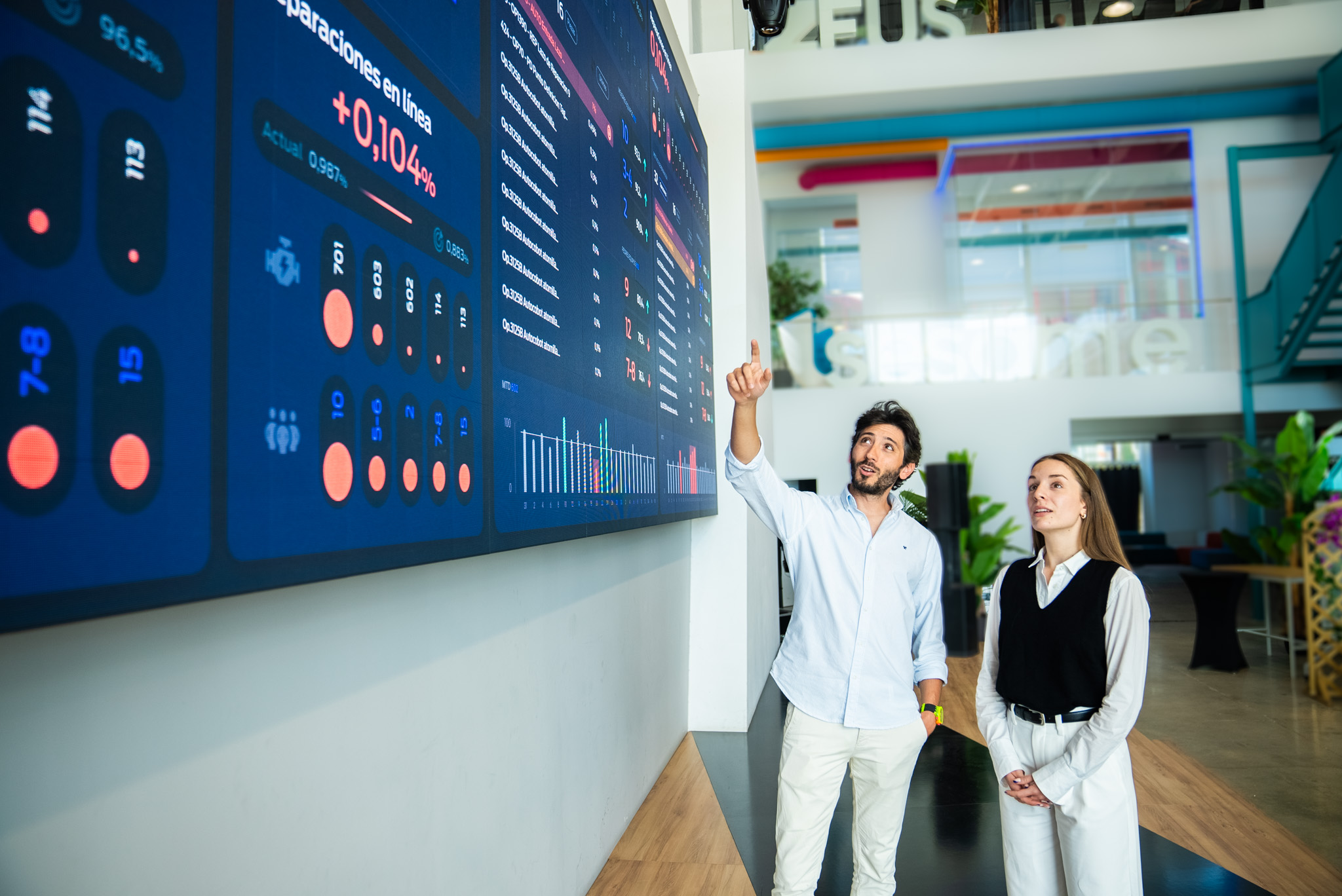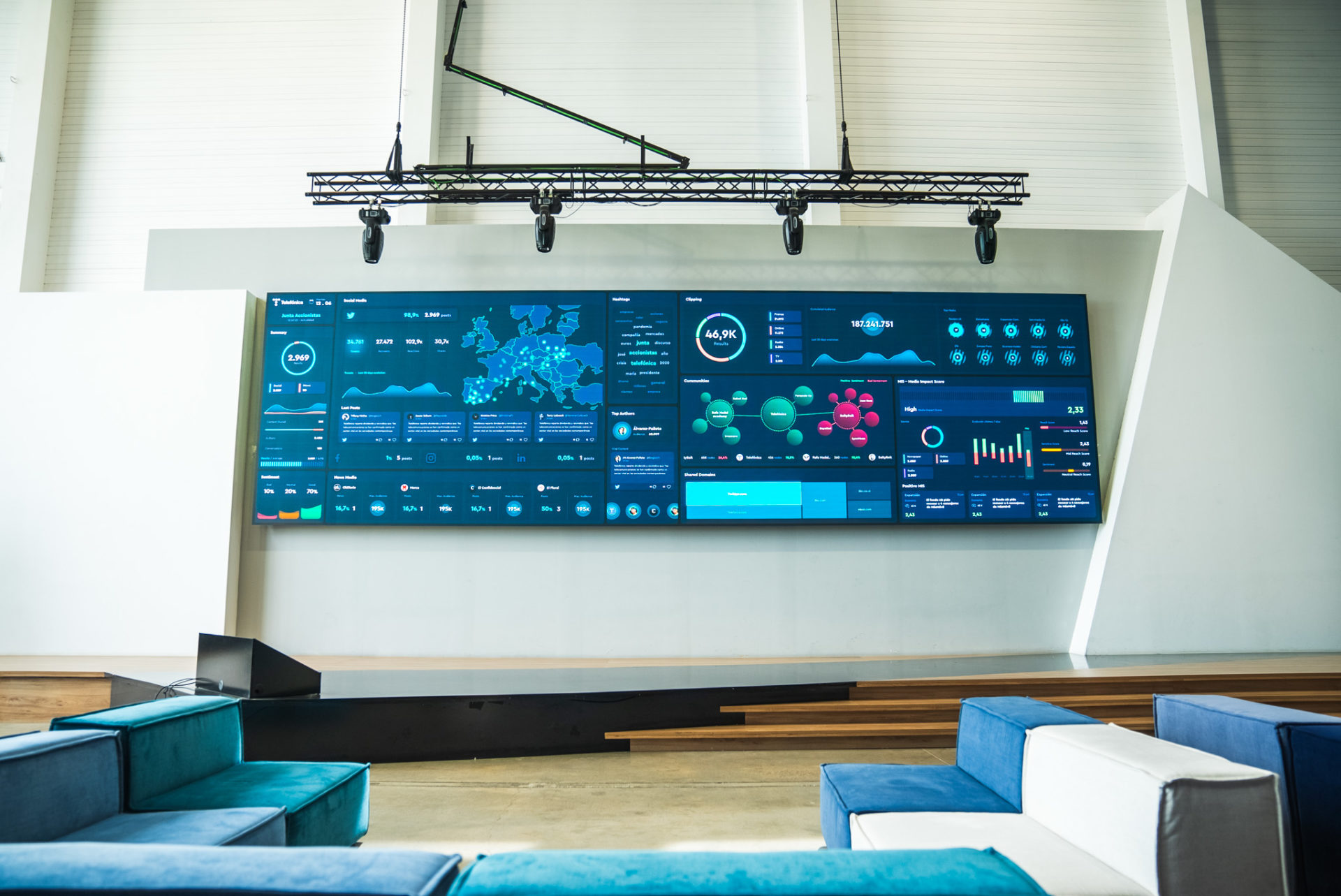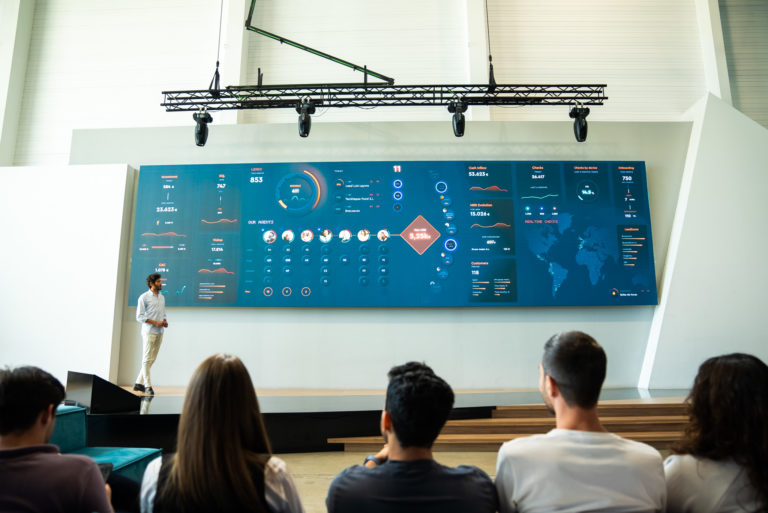Big Data in business: how to visualize data

Big Data in business refers to the large set of complex data that is difficult to process by traditional data management methods. It ranges from data such as text, images, video, financial transactions to data from sensors or social networks.
The main objective? To extract valuable information to help us make decisions, optimize processes, customize services or identify trends and behavioral patterns in the data. However, how do we go from an avalanche of complex data to useful, understandable information that really helps managers and decision makers? Data visualization plays a key role here. Let’s take a look at what big data is in companies and what role it currently plays.
What is Big Data in companies and what is it for?
We have been collecting information since cuneiform writing. Big Data in companies refers to the analysis of a large amount of complex data through Business Intelligence.
The digital era brings with it the generation of a huge amount of information. Such is the amount of complex data being created every day that traditional processing software does not have sufficient capacity to manage and shape it.
In fact, these massive volumes of data can be used to address problems in companies that previously would not have been possible to solve because they did not have the right tools or resources to do so.
Big Data in business is the massive set of complex data that provides insights to improve the daily operations of organizations.
Thus, the goal of Big Data in business is to extract valuable information and meaningful insights from that large data set, providing:
- Competitive advantage.
- Process optimization.
- Predictive insights.
- Pattern and trend identification.
What are the functions of Big Data in companies? Through advanced data analysis techniques, such as distributed processing, real-time data analysis, machine learning, artificial intelligence and data mining, sense is made of this maelstrom of data. Through these techniques, complex relationships and hidden patterns are identified, providing valuable information.
The 5Vs of Big Data in companies
The origin of Big Data is relatively new. Large data sets date back to 1960-1970, when the first data centers emerged. However, it was in the 2000s when it began to take off as such, for two reasons: first, because of the rapid generation of data by users in social networks and online services; second, because of the development of Hadoop technologies, which made it possible to reduce the cost of using and storing information.

One of the first definitions of Big Data can be coined from Gartner, which gave it in 2001: “Big Data is data that contains a greater variety and is presented in increasing volumes and at a higher velocity”. Big Data arises as an answer to a need that did not exist before: how to store and take advantage of massive and excessive volumes of data.
The 3V of Big Data
Gartner mentioned the so-called 3 Vs of Big Data:
- Volume. The amount of data is important. Big Data processes large volumes of unorganized data. Companies are collecting more and more information every day, which, until a few years ago, was more complicated to process with the technologies available at the time.
- Speed. This refers to the pace at which data is received and at which the action is performed. Thanks to Big Data, we have systems that process this massive data almost in real time, avoiding possible bottlenecks.
- Variety. What data do we have, from what sources does the information we have to analyze come from. Data appears in all kinds of formats, unstructured data has increased, so making sense of it and analyzing it is a challenge.
However, this definition, with the passage of time and the development of new technologies and massive processing of more and more information, has fallen a little short. Hence, two more important characteristics have now been added, known as the 5 Vs of Big Data.
4. Veracity. We receive data from multiple and varied sources at breakneck speed. Therefore, there is every reason to question the veracity of the data we receive. Companies must ensure that the information is truthful and useful for decision making. It is more common than you might think to receive incorrect or incomplete data, with the consequences that this can have: making bad decisions, distorting analyses and conclusions, etc. Data must be cleaned and filtered very well before we start working with them.
5. Value. The data must provide value to the company, generating information that streamlines and directs decision-making. The information must be a useful and faithful guide to improve day-to-day operations. And, above all, companies must have the opportunity to make the most of it.
Big Data in Business: An Overview
Big Data has become a pervasive trend in the modern business world. From tracking market trends to optimizing internal processes, companies are increasingly turning to data analytics to gain a competitive advantage. However, the simple act of collecting massive data is not enough; it is crucial to understand and draw meaningful conclusions from this information. This is where data visualization comes into play, promoting data literacy and accessibility.
Transforming data into insights: data visualization best practices
How we interpret information depends, to a large extent, on how we consume it. When it comes to visualizing and consuming data, there are a number of data visualization best practices to keep in mind in order to exploit information to the fullest and communicate valuable insights.

Let’s have a look at some of these essential data visualization practices:
- Choice of graphics. The purpose of data is to tell stories. To do this, it is key to choose the right graphic so that we can convey and represent the information clearly and effectively. It is not a matter of choosing the most beautiful graphic or the one that looks best on our dashboards. It must be a graph that reflects and allows us to interpret the information correctly.
- Use of effective colors. Colors help, on the one hand, to highlight important information; on the other hand, to make it easy to read and understandable at a glance. However, we should use colors sparingly, with a clear purpose and meaning. Let’s avoid using too many bright colors that attract more attention than necessary, distracting and confusing the people who are consuming the information on the dashboard.
- Storytelling behind the data. Data alone can be confusing and difficult to interpret. It is necessary to give it context, meaning through a clear narrative. One that reflects the history of our company. If we are able to contextualize the information and tell a coherent story, we not only help the team to understand it better, but also give the importance it deserves to all the information presented on a dashboard.
Empowering decision making with data visualization
In summary, data visualization is a powerful tool for transforming large amounts of information into clear and meaningful insights. By following data visualization best practices, companies can empower their managers and decision makers with the information they need to make informed and strategic decisions.
In a world driven by Big Data, mastering the art of data visualization is essential to enhance the value of information.



